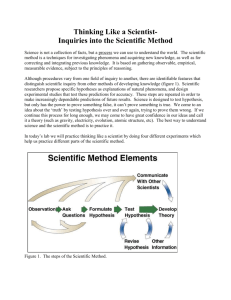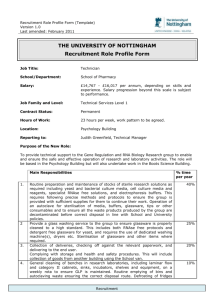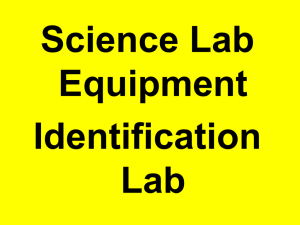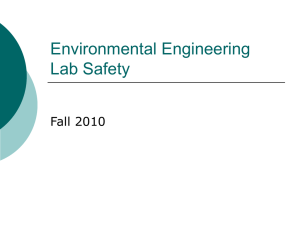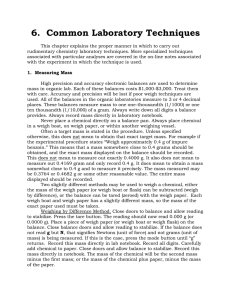Intro to Marine Biology Lab - FIU Faculty Websites
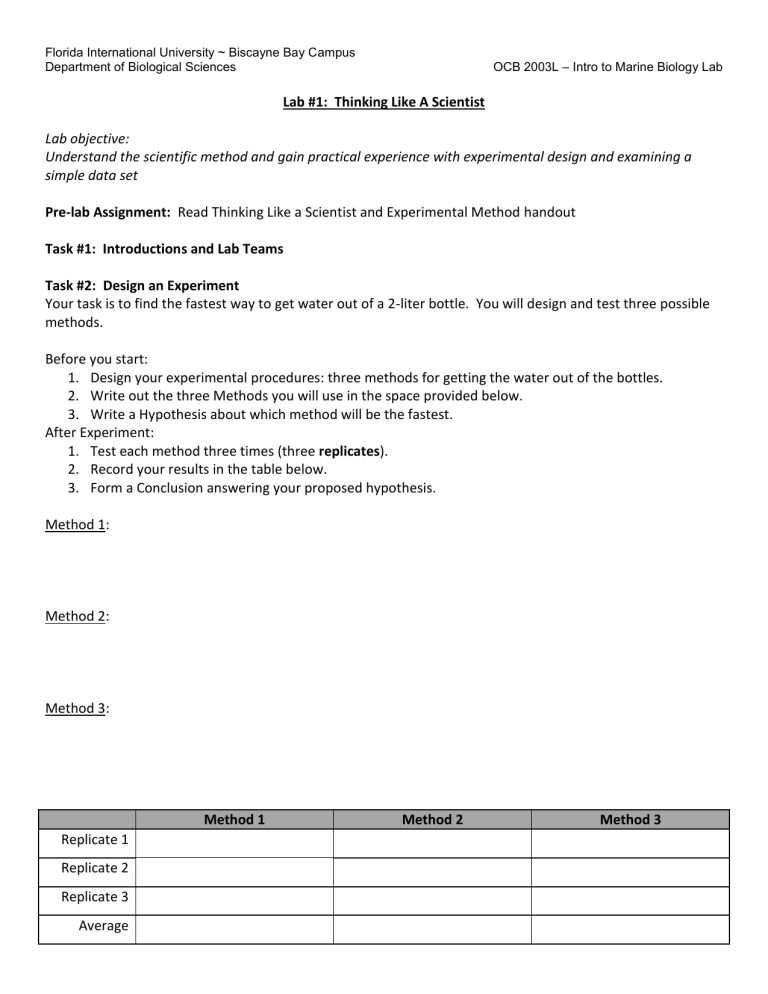
Method 2:
Method 3:
Florida International University ~ Biscayne Bay Campus
Department of Biological Sciences
Lab #1: Thinking Like A Scientist
OCB 2003L – Intro to Marine Biology Lab
Lab objective:
Understand the scientific method and gain practical experience with experimental design and examining a simple data set
Pre-lab Assignment: Read Thinking Like a Scientist and Experimental Method handout
Task #1: Introductions and Lab Teams
Task #2: Design an Experiment
Your task is to find the fastest way to get water out of a 2-liter bottle. You will design and test three possible methods.
Before you start:
1.
Design your experimental procedures: three methods for getting the water out of the bottles.
2.
Write out the three Methods you will use in the space provided below.
3.
Write a Hypothesis about which method will be the fastest.
After Experiment:
1.
Test each method three times (three replicates).
2.
Record your results in the table below.
3.
Form a Conclusion answering your proposed hypothesis.
Method 1:
Replicate 1
Method 1 Method 2 Method 3
Replicate 2
Replicate 3
Average
Florida International University ~ Biscayne Bay Campus
Department of Biological Sciences
Conclusion:
OCB 2003L – Intro to Marine Biology Lab
1.
Did your results support your original hypothesis? Why or why not?
2.
You now have hands-on experience emptying water out of bottles. Would you recommend your fastest method? Or has your experience allowed you to come up with a fourth, and possibly better, method?
Task #3: The Weight of Water
We will show you three different kinds of laboratory glassware. All of them have graduations showing 100ml.
Your objective is to determine which one is most appropriate for measuring exactly 100ml of water. Water has a density of 1.0 g/ml. This means that 100ml of water should weigh 100 grams. First develop a hypothesis as to which one will be the most accurate and precise and write it down. Your idea should include a justificationwhy is it that you think this one is more precise than another.
You will use the laboratory balances-Do not get water on them. In order to determine the mass of water in a container, you must first weigh the dry container, fill the container, weigh the container and water, and then subtract off the mass of the container. You’ll want to do this for each piece of glassware. Don’t assume that each beaker (or other glassware) has the same mass, weigh them all individually.
Consistency is one of the most important skills in the lab and in all scientific investigations. You must fill your glassware exactly the same way each time. I will demonstrate how to fill them to the right level. You may want to use pipettes to add to your glassware a drop at a time.
You’ll want to make your measurements three times on each type of glassware; this is what we call a
replicate. You’ll report the mean (average) of each type of glassware. Once finished with your measurements, calculate mean (average) for each type of glassware.
Hypothesis:
Florida International University ~ Biscayne Bay Campus
Department of Biological Sciences OCB 2003L – Intro to Marine Biology Lab
Team # Beaker
Beaker +
H
2
O H
2
O Grad. Cyl.
Grad. Cyl.
+ H
2
O H
2
O Erl. Flask
Erl. Flask
+ H
2
O H
2
O
Mean
Conclusion:
1.
According to the class data, what was the most accurate piece of glassware (i.e. had an average water weight closest to 100 grams)? What was the most imprecise (i.e. had the largest range of measurement)?
2.
Did your team’s data validate your hypothesis? How?
3.
Did the class data validate your hypothesis (i.e. were the class data the same as yours)?
4.
What do the class data indicate regarding which type/s of glassware are good for accurate and precise measurements and which would you use if you needed approximately 100ml?
Florida International University ~ Biscayne Bay Campus
Department of Biological Sciences OCB 2003L – Intro to Marine Biology Lab
5.
Were your data the same or similar to that of your classmates? If yours were different, justify (develop a logical argument as to) why this might be so.
6.
Are some of the class data clearly different than the rest? Whose data should we believe and why?
